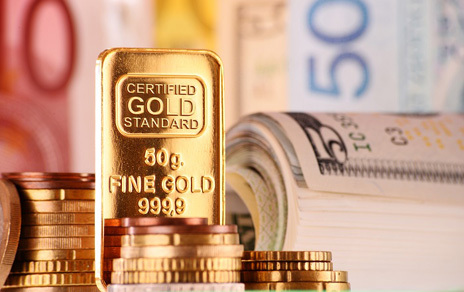
Gold is a green hedge – it can improve a portfolio's carbon profile – World Gold Council
Gold can play many different roles in an investment portfolio; it is an important diversification tool and hedge against inflation. According to the latest research from the World Gold Council (WGC), gold can improve a portfolio's carbon footprint, too.
In an interview with Kitco News, John Mulligan, climate change lead and market relations at the WGC, said that the latest report on gold's environmental footprint is the culmination of four years of research that has quantified the gold market's carbon footprint and its role it can play in a portfolio where investors recognize the growing importance of Environment and Social Governance (ESG).
Mulligan explained that with EGS playing a growing role in investment decisions, the WGC wanted to show investors how the precious metal can meet these new demand trends.
"If you can't measure an asset's impact on climate change, then investors are not going to hold it. We can now show that gold can have a positive impact on the carbon profile of your portfolio," he said. "If you think about gold's traditional role as a risk mitigation asset, well, the risk spectrum is now expanded."
Mulligan noted that the WGC's research shows that once gold is mined and refined, as an asset, it actually has a low carbon profile. Aside from the extraction phase, gold bullion and gold-backed exchange-traded products do not use a lot of energy, he said.
According to the WGC's research, in a traditional portfolio with 70% exposure to equities and 30% exposure to bonds, a 10% gold allocation would reduce the portfolio's emission intensity by 7%. Holding a 20% allocation in gold lowered it by 17%.
The WGC's research also shows that gold can also lower a portfolio's temperature rating. Mulligan explained that a new ESG measurement looks at how allocations can influence rising global temperatures.
WGC noted that a 50% allocation to gold could reduce a portfolio's temperature rating by more than one full degree. Holding 10% of your portfolio in gold would reduce the temperature rating by 7% or 0.21 degrees.
One final area the WGC looked at was gold's role as a hedge against rising carbon prices. Similar to its role as an inflation hedge, Mulligan said that gold also does well as a hedge against the potential for increasing carbon taxes and fees.
Mulligan added that gold's ability to improve a portfolio's environmental standing is expected to improve as more gold producers embrace alternative green energy.
According to the WGC, most of the carbon emission generated in the gold market comes from the mining sector as extracting gold can be energy-intensive. In the past, most of that energy was generated from fossil fuels burned to run generators. However, companies are making a concerted effort to reduce their dependence on coal and diesel and use more renewable energy, including hydroelectricity and solar panels.
"Gold production can be fairly energy-intensive, but as soon as you have clean electricity, you can be fairly energy-intensive and still not have a carbon impact. That is important in terms of real economy impacts," said Mulligan.
Mulligan added that the WGC expects the mining sector's push for new green energy will be a long-term trend. He said that because of rising energy prices, there are now financial reasons for mining companies to look at alternative green energy sources.
By Neils Christensen
For Kitco News
Buy and Sell Gold and Silver with Free Storage
David